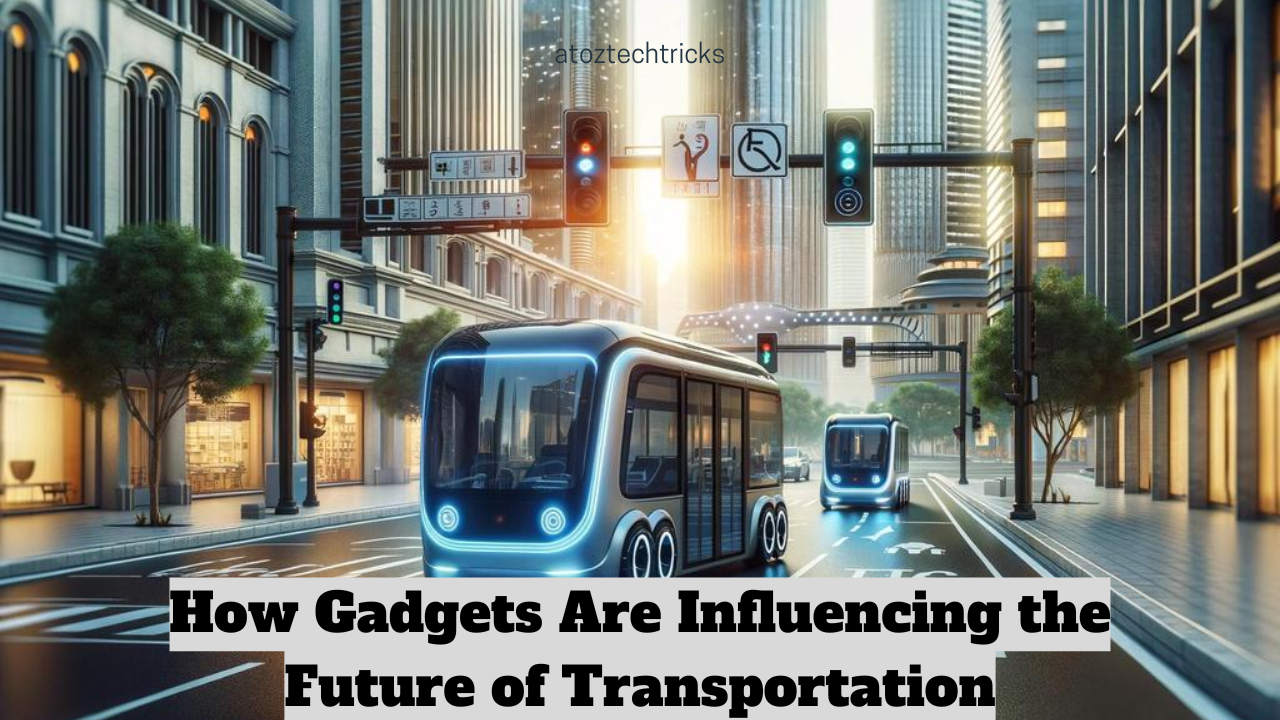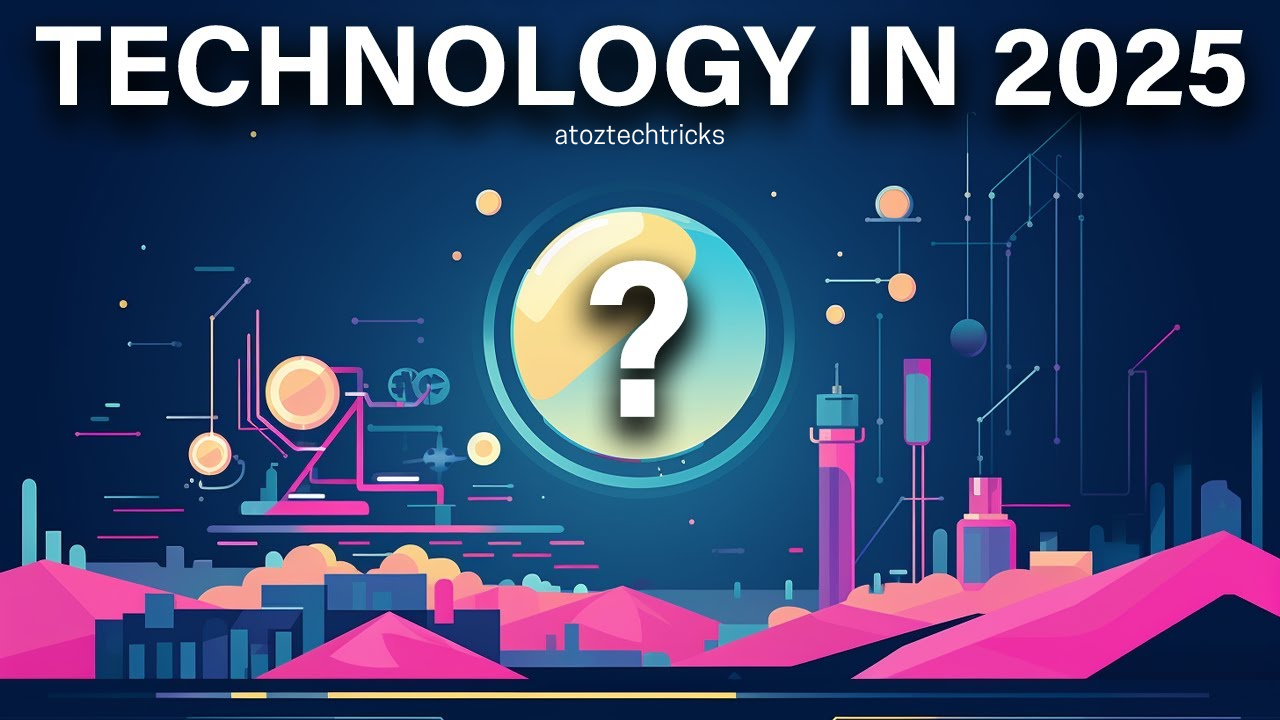The rapid pace of technological innovation has permeated almost every aspect of our lives, and transportation is no exception. Gadgets and cutting-edge technologies are revolutionizing how we move from one place to another, promising to enhance safety, efficiency, and sustainability. This article delves into how various gadgets are influencing the future of transportation, exploring advancements in autonomous vehicles, smart infrastructure, electric vehicles, and connected transportation ecosystems.
1. Autonomous Vehicles: The Road Ahead
Autonomous vehicles (AVs) represent one of the most significant technological advancements in the transportation sector. These self-driving cars use an array of gadgets and sensors to navigate roads with minimal human intervention. Here’s how they’re reshaping the future of transportation:
1.1. Sensor Technology
At the heart of autonomous vehicles are sophisticated sensors, including LiDAR (Light Detection and Ranging), radar, and cameras. These devices create a comprehensive 360-degree view of the vehicle’s surroundings, enabling it to detect and respond to various environmental factors, such as other vehicles, pedestrians, and road conditions.
- LiDAR: LiDAR systems emit laser pulses to measure distances and generate a detailed 3D map of the environment. This technology is crucial for creating accurate representations of the vehicle’s surroundings, which helps in making real-time decisions.
- Radar: Radar systems use radio waves to detect the speed and distance of objects, assisting in collision avoidance and adaptive cruise control.
- Cameras: High-resolution cameras capture visual information, enabling lane-keeping, traffic sign recognition, and other critical functionalities.
1.2. Artificial Intelligence and Machine Learning
AI and machine learning algorithms process the data collected by sensors to make driving decisions. These technologies continuously learn from real-world driving scenarios, improving the vehicle’s performance over time. Key areas where AI impacts autonomous driving include:
- Path Planning: AI algorithms determine the optimal path for the vehicle, considering factors such as traffic, road conditions, and obstacles.
- Decision Making: Machine learning models analyze data to make split-second decisions, such as when to brake or change lanes.
1.3. Connectivity and Communication
Autonomous vehicles rely on connectivity to communicate with other vehicles and infrastructure. Vehicle-to-Everything (V2X) communication enables:
- Vehicle-to-Vehicle (V2V): Allows vehicles to share information about their speed, position, and direction, reducing the risk of collisions.
- Vehicle-to-Infrastructure (V2I): Facilitates communication with traffic signals, road signs, and other infrastructure elements to optimize traffic flow and improve safety.

2. Smart Infrastructure: The Backbone of Modern Transportation
As transportation technology evolves, so does the infrastructure that supports it. Smart infrastructure integrates gadgets and technology to enhance the efficiency and safety of transportation systems.
2.1. Intelligent Traffic Management
Smart traffic management systems use gadgets like sensors and cameras to monitor and manage traffic flow. Key components include:
- Traffic Sensors: Embedded in roads, these sensors collect data on vehicle count, speed, and congestion levels. This information helps in adjusting traffic signals and providing real-time traffic updates.
- Adaptive Traffic Signals: Traffic lights equipped with sensors and AI can adjust their timings based on current traffic conditions, reducing congestion and improving traffic flow.
2.2. Smart Parking Solutions
Smart parking technology addresses the growing challenge of parking in urban areas. Innovations include:
- Parking Sensors: Installed in parking spaces, these sensors detect the presence of vehicles and provide real-time information on available spots.
- Parking Apps: Mobile applications guide drivers to available parking spots, reducing the time spent searching for parking and alleviating congestion.
2.3. Roadway Maintenance and Safety
Smart infrastructure also enhances road safety and maintenance through:
- Pothole Detection: Sensors embedded in roadways can detect potholes and other surface issues, alerting maintenance crews to address problems before they become severe.
- Weather Sensors: These sensors monitor weather conditions, such as temperature and precipitation, to provide real-time updates and adjust traffic signals accordingly.
3. Electric Vehicles: Driving Towards a Greener Future
Electric vehicles (EVs) are transforming the transportation landscape by offering an eco-friendly alternative to traditional internal combustion engine vehicles. Gadgets play a crucial role in the development and adoption of EVs.
3.1. Battery Technology
Battery technology is a cornerstone of EV advancement. Gadgets and innovations in this area include:
- Battery Management Systems (BMS): BMS monitors and manages the performance of EV batteries, ensuring optimal operation and longevity. It tracks battery health, state of charge, and temperature.
- Charging Stations: High-speed and wireless charging stations are improving the convenience of charging EVs. Gadgets such as smart chargers can optimize charging times based on electricity rates and grid demand.
3.2. Range and Efficiency
To address range anxiety—the fear of running out of battery—gadgetry advancements include:
- Range Extenders: Some EVs use range extenders, such as small generators, to provide additional power when the battery is low.
- Energy-efficient Systems: Technologies like regenerative braking capture and store energy during braking, improving overall efficiency and extending the vehicle’s range.
3.3. Vehicle-to-Grid (V2G) Technology
V2G technology allows EVs to interact with the power grid, providing benefits such as:
- Energy Storage: EVs can store excess energy from renewable sources and feed it back into the grid during peak demand times.
- Grid Stabilization: By balancing supply and demand, V2G technology helps stabilize the grid and reduce the reliance on fossil fuels.
4. Connected Transportation Ecosystems: Integration and Innovation
The future of transportation is not just about individual vehicles but about creating an integrated ecosystem that enhances the overall travel experience. Gadgets and technologies contributing to this ecosystem include:
4.1. Mobility-as-a-Service (MaaS)
MaaS platforms integrate various transportation services into a single, user-friendly interface. Gadgets involved include:
- Smartphones and Apps: Mobile apps provide access to multiple transportation options, such as ride-sharing, public transit, and bike rentals, allowing users to plan and pay for their journeys seamlessly.
- Digital Ticketing: Electronic ticketing systems streamline fare collection and reduce the need for physical tickets.
4.2. Fleet Management and Telematics
Fleet management systems use telematics to monitor and optimize the performance of commercial vehicles. Key technologies include:
- GPS Tracking: GPS devices track the location and movement of vehicles in real time, enabling route optimization and efficient fleet management.
- Telematics Devices: These gadgets collect data on vehicle performance, driver behaviour, and maintenance needs, helping companies improve efficiency and reduce costs.
4.3. Smart Roads and Highway Systems
Innovations in smart roads and highways contribute to a more efficient and safer transportation experience. Examples include:
- Embedded Sensors: Sensors embedded in road surfaces can monitor traffic conditions, weather, and vehicle interactions, providing valuable data for traffic management and safety measures.
- Smart Signage: Digital signs and variable message boards can display real-time information, such as traffic updates, road closures, and travel advisories.

5. Challenges and Considerations
While gadgets and technologies are driving advancements in transportation, several challenges and considerations must be addressed:
5.1. Privacy and Security
The integration of gadgets and connected systems raises concerns about data privacy and security. Ensuring that personal and vehicle data are protected from unauthorized access and cyber threats is crucial.
5.2. Infrastructure and Investment
The deployment of new technologies requires significant investment in infrastructure and maintenance. Governments and private entities must collaborate to ensure that the necessary infrastructure is in place to support advancements in transportation.
5.3. Regulatory and Ethical Issues
As technologies such as autonomous vehicles become more prevalent, regulatory and ethical issues must be addressed. These include establishing safety standards, and liability frameworks, and addressing the impact of automation on employment.
6. The Future of Transportation: A Vision of Innovation
The influence of gadgets on the future of transportation is transformative, paving the way for a new era of mobility. Key trends to watch include:
6.1. Enhanced Connectivity
The integration of IoT (Internet of Things) devices and 5G technology will further enhance connectivity between vehicles, infrastructure, and users. This will lead to smarter and more responsive transportation systems.
6.2. Sustainable Solutions
Advancements in electric and autonomous technologies will contribute to more sustainable transportation solutions. The focus will be on reducing emissions, improving energy efficiency, and promoting the use of renewable energy sources.
6.3. Personalized Transportation
The rise of AI and data analytics will enable more personalized transportation experiences. From tailored route recommendations to customized in-vehicle experiences, technology will cater to individual preferences and needs.
Gadgets and technologies are fundamentally reshaping the future of transportation. From autonomous vehicles and smart infrastructure to electric vehicles and connected ecosystems, these innovations are driving progress and offering solutions to some of the most pressing challenges in transportation. As we move forward, the continued evolution of these technologies will play a pivotal role in creating a more efficient, safe, and sustainable transportation system for future generations.




